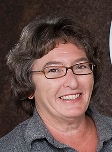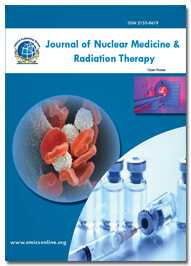Theme: Advanced Trends in Radiology and Imaging
Radiology-2015
Conference Series LLC Ltd invites radiology congress 2015 all participants across the world to join 3rd International Conference on Radiology & Imaging which is going to be held during August 24-26, 2015 Toronto, Canada. Radiology Congress is a trending event which brings together efficient international academic scientists, young researchers, and students making the congress a perfect platform to share experience, gain and evaluate emerging technologies in Radiology across the globe. Initiation of cross-border co-operations between scientists and institutions will be also facilitated. The Main theme of the Conference is “Advanced Trends in Radiology and Imaging”. This conference provides three days of great opportunity to discuss on recent approaches and advancements for development of new techniques for global health.
Conference Series LLC Ltd Organizes 300+ Conferences every year across USA, Europe, Australia & Asia with support from 1000 more scientific societies and Publishes 500 Open access journals which contains over 30000 eminent personalities, reputed scientists as editorial board members , for more information you can go through our Conference Series LLC Ltd web page.
Acquisition of Radiological Images
Radiology imaging is the technique and process of creating visual representations of the interior of a body for clinical radiology analysis and medical intervention. Medical imaging seeks to reveal internal structures hidden by the skin and bones, as well as to diagnose and treat disease.
Radiology imaging it is part of biological imaging and incorporates radiology which uses the imaging Interventional Radiology technologies of x-ray radiography, magnetic resonance imaging, radiological markers, medical ultrasonography or ultrasound, endoscopy, elastography, tactile imaging, thermography, medical photography and nuclear medicine functional imaging techniques as positron emission tomography.
Section 135(a) of the Medicare Improvements for Patients and Providers Act of 2008 (MIPPA) amended section 1834(e) of the Social Security Act .MIPPA specifically defines advanced diagnostic imaging procedures as including diagnostic magnetic resonance imaging (MRI), Medical Sonography, Body Imaging, Molecular imaging, computed tomography (CT), and nuclear medicine body imaging such as positron emission tomography (PET). The law also authorizes the Secretary to specify other diagnostic imaging services in consultation with physician specialty organizations and other stakeholders.
MIPPA expressly excludes from the accreditation requirement x-ray, ultrasound, Body Imaging, Diagnostic Medical Sonography and fluoroscopy procedures. The law also excludes from the CMS accreditation requirement diagnostic and screening mammography which are subject to quality oversight by the Food and Drug Administration under the Mammography Quality Standards Act.
Diagnostic radiology helps health care professionals see structures inside your body. Doctors that specialize in the interpretation of these images are called diagnostic radiologists. Using the diagnostic images, the radiologist or other physicians can often:
The most common types of diagnostic radiology exams include Computed tomography (CT), also known as a CAT scan (computerized axial tomography), including CT angiography, Fluoroscopy, including upper GI and barium enema, Magnetic resonance imaging (MRI) and Mammography, magnetic resonance angiography (MRA), Nuclear medicine, which includes such tests as a bone scan, thyroid scan, and thallium cardiac stress test, Plain x-rays, which includes chest x-ray, Positron emission tomography, also called PET imaging or a PET scan and Ultrasound.
Congress Radiology is a medical specialty event that uses imaging to diagnose and treat disease seen within the body. Radiologists use a variety of imaging techniques such as X-ray radiography, ultrasound, computed tomography (CT), nuclear medicine including positron emission tomography (PET), and magnetic resonance imaging (MRI) to diagnose and/or treat diseases. Personalized medicine or PM is a medical model that proposes the customization of healthcare, and Interventional radiology is the performance of (usually minimally invasive) medical procedures with the guidance of imaging technologies.
Medical images are pictures of distributions of physical attributes captured by an image acquisition system. Most of today’s images are digital. They may be post processed for analysis by a computer-assisted method. Medical images come in one of two varieties: Projection images project a physical parameter in the lung disease in human body on a 2D image, while slice images produce a one-to-one mapping of the measured value. International radiology conferences explore the new technologies in medical images. Medical images may show anatomy including the pathological variation of anatomy if the measured value is related to it or physiology when the distribution of substances is traced. X-ray imaging, CT, Dynamic MRI, nuclear imaging, ultrasound imaging, and Cellular imaging is the study of living cells using time-lapse microscopy, photography. The discussion focuses on the relationship between the imaged physical entity and the information shown in the image, as well as on reconstruction methods and the resulting artifacts
A spinal cord tumor is a benign or cancerous growth in the spinal cord, between the membranes covering the spinal cord, or in the spinalcanal. A tumor in this location can compress the spinal cord or its nerve roots; therefore, even a noncancerous growth can be disabling unless properly treated. Spinal tumor is mainly identified using MRI Patterns in Spinal Cord Pathologies. This precise mode of delivery allows radiation oncologists to maximize dose to the tumor while sparing the critical surrounding structures, primarily the spinal cord itself. Patients can be treated in a single fraction or in slightly smaller daily fractions.
Many of the imaging techniques come in two varieties. Projection images show a projection of the 3D human body onto a 2D plane and slice images show a distribution of the measurement value in a 2D slice through the human body. Slice images may be stacked to form a volume. Digitized images consist of a finite number of image elements. An MRCP scan is a scan that uses magnetic resonance imaging (MRI) to produce pictures of the liver, Although the scan is thought to be safe, the long-term effects of strong magnetic fields .Elements of a 2D picture are called pixels (picture elements) and elements of stacked 2D slices are called voxels (volume elements). We will call pixels or voxels scene elements if the dimension of the scene is not known or not important.
About 60 percent of cancer patients are treated with radiation at some time during their course of treatment. Radiation therapy which is used for high-energy radiation to treat cancer. A radiation oncologist may use radiation to cure cancer such as Breast Cancer blood cancer etc. That uses magnetic resonance imaging (MRI) or to relieve a cancer patient's pain or alleviate other symptoms due to the cancer. Projection images project a physical parameter in the lung cancer in human body on a 2D image which will identify the cancer stage
Radiation therapy works because the radiation destroys the cancer cells' ability to reproduce, and the body naturally gets rid of these cells. Radiology conferences explore the scope of radiation affects cancer cells by damaging their DNA, so that the cancer cells can no longer divide and grow. Radiation is most effective at killing cells that are actively dividing.
Imaging Probes, Chemistry and Reporter Genes
Imaging techniques such as X-ray radiography, ultrasound, computed tomography (CT), nuclear medicine including positron emission tomography (PET), and magnetic resonance imaging (MRI) to diagnose and/or treat diseases. Interventional radiology is the performance of (usually minimally invasive) medical procedures with the guidance of imaging technologies.
Imaging Technology, Methodology and Software
Many medical imaging conferences will also use software applications (3DSlicer, ImageJ, MIPAV, etc.) are used for non-diagnostic imaging, specifically because they don't have an FDA approval and not allowed to use in clinical research for patient diagnosis.
Recently, techniques have been developed to enable CT, MRI and ultrasound scanning software to produce 3D images for the physician Traditionally CT and MRI scans produced 2D static output on film. To produce 3D images, many scans are made, and then combined by computers to produce a 3D model, which can then be manipulated by the physician. 3D ultrasounds are produced using a somewhat similar technique. In diagnosing disease of the viscera of abdomen, ultrasound is particularly sensitive on imaging of biliary tract, urinary tract and female reproductive organs.
Bremsstrahlung is the major influence in most x-ray tubes with the exception of x-ray tubes for mammography. The purpose of mammography is to detect small, nonpalpable lesions in the female breast. This requires a much higher image quality than normal x-ray imaging with respect to contrast and spatial resolution. Since contrast and resolution are affected by scattering, mammography tubes reduce bremsstrahlung by suitable filtering. Furthermore, mammography tubes use a material (Molybdenum) that produces an almost monochrome x ray with peak energies around 17 to 19 keV. This would be unwanted in regular x-ray imaging as most—if not all—of the radiation would be absorbed and not reach the receptor. For the breast, however, the use of low-energy beams increases the contrast between the subtle differences of different tissues. Using an (almost) monochromatic beam will also reduce scatter, which again increases contrast.
Staging is the process of finding out how much cancer is in a person’s body and where it’s located. It’s how the doctor determines the stage of a person’s cancer.
For most types of cancer, doctors use staging information to help plan treatment and to predict a person’s outlook (prognosis). Although each person’s situation is different, cancers with the same stage tend to have similar outlooks and are often treated the same way. The cancer stage is also a way for doctors to describe the extent of the cancer when they talk with each other about a person’s cancer.
As the researchers learn more about cancer, they’re developing new therapies that target particular types of tumor cells and restrict their growth. On their own or in combination with other alternative treatments, these therapies can decrease the size of tumors and symptoms. Some innovative therapies give hope for people with cancers that have been resistant to more treatments. There are different stages of the cancer like Stage 1, Stage 2, Stage 3 and Stage 4.
Cancer survival rates or survival statistics tell you the percentage of people who survive a certain type of cancer for a specific amount of time. Cancer statistics often use an overall five-year survival rate.
Cancer survival rates are supported on research from information gathered on hundreds or thousands of individuals with a particular cancer. An overall survival rate includes individuals of all ages and health conditions who have been diagnosed together with your cancer, together with those diagnosed terribly early and people diagnosed terribly late.
Cancers are categorized according to the organ at which they have been originated. Even if a cancer metastasizes to the other wings of the body, it protects its original name. Some of the examples of the cancers are breast cancer, brain cancer, lung cancer, skin cancer. However, cancer names could also be based on the type of tissue which is affected. This section will introduce you to some basics regarding the derivation of tissues in the context of embryology, which is the study of the development of an organism.
According to a new market report published by Transparency Market Research entitled, "Digital Radiology Market is estimated at $9.7 billion in 2012 and expected to reach $13.3 billion by 2018, 2012 - 2018," at a compound annual growth rate of 5.4 percent from 2012 to 2018. The digital radiology devices market is extremely competitive with a close gap between Siemens Healthcare, GE Healthcare, Philips Healthcare, Canon Medical, Konica Minolta and Fujifilm.
As per the analysis Mammography equipment market to hit $610 million and ray equipment market reaches 7.5B euros by 2018. Top 5 University which are carrying active research on radiology domain are as follows Stanford University, University of the District of Columbia, Sinai-Grace Hospital, University of Pennsylvania M.C., California State University, and Long Beach.
Radiology is a medical stream that utilizes imaging to diagnose and treat diseases seen within the body organs. It is an area of medicine that uses both ionizing and nonionizing radiations for the identification and treatment of disease or illness
Radiology Conference: Large number of people at a predetermined venue to discuss about the latest trends and developments about the radiology.
Medical Radiology: This covers many types of studies that involve the visualization of the internal parts of the body using x-ray procedures.
Radiology congress: Explore under supervision of a senior physician, highly affiliated radiologist, and other health professionals and whose supervision the competence justify their research presentation
Radiology meeting: has been in the mission of exploring the research knowledge by the researches with their scientific information in front of worldwide international Science Congresses
To share your views and research, please click here to register for the Conference.
To Collaborate Scientific Professionals around the World
| Conference Date | August 24-26, 2015 | ||
| Sponsors & Exhibitors |
|
||
| Speaker Opportunity Closed | Day 1 | Day 2 | Day 3 |
| Poster Opportunity Closed | Click Here to View | ||
Useful Links
Special Issues
All accepted abstracts will be published in respective Our International Journals.
- Chemotherapy: Open Access
- Journal of Carcinogenesis & Mutagenesis
- Journal of Cancer Science & Therapy
Abstracts will be provided with Digital Object Identifier by


















